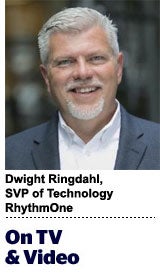 “On TV And Video” is a column exploring opportunities and challenges in programmatic TV and video.
“On TV And Video” is a column exploring opportunities and challenges in programmatic TV and video.
Today’s column is written by Dwight Ringdahl, senior vice president of technology at RhythmOne.
The Federal Communications Commission’s (FCC) proposal to open up the set-top cable box is about a lot of things. It’s about reducing costs and democratizing the TV hardware market. It’s also about programmatic ads and the emergence of over-the-top (OTT).
It’s also generated a lot of controversy since it was proposed in January, uniting the advertising industry in opposition. When the details were unveiled, it seemed that the “how” of the regulation fell short of the “why.” The Association of National Advertisers and the National Cable and Television Association joined Roku and others to object, worrying that specific interventions would create more problems than they solve and distort a market already moving in the direction of more consumer choice.
But beyond the politics, the FCC’s move represents a much larger shift. I think Roku CEO Anthony Wood really nailed it when he characterized it as an attempt to “decouple the user interface from the video and data itself.”
What the FCC’s move signals is the beginning of the end to TV’s longstanding linear interface, as the era of channel surfing gives way to an era of selection and choice. Cable networks, with their clunky boxes and complicated remotes, have failed to meet the demands of viewers who increasingly want premium, on-demand, bingeworthy content through a lean device that’s as easy to operate as their smartphone. Content is breaking free.
The reality of this paradigm shift is what underlies both the opposition to the proposal and the proposal itself. OTT options are already proliferating, and the lines between linear TV and video on-demand (VOD) are blurring more quickly than ever.
Critics believe that the industry is already heading in that direction and doesn’t need FCC regulation to get it there. They are also concerned that this “decoupling” would disrupt TV contracts and subject TV advertising to digital advertising’s endemic problems, including ad blocking, fraud and malware.
The FCC, with White House support, argues that consumers are forced to spend too much on hardware they don’t want, for an outdated user interface in a world dominated by sleek mobile devices. And they are concerned, behind the scenes, about the growing concentration of content ownership in the hands of cable companies such as Verizon.
What I find most compelling are the long-term implications of the “decoupling.” That decoupling will accelerate either by virtue of the proposal or through market forces. And in the long run, advertisers and content providers stand to benefit because OTT delivers better engagement, plain and simple.
Linear TV might be the most potent advertising medium ever created. But in a fractured media landscape, it no longer represents the centripetal force of a consumer’s media universe. Linear can never deliver on the level of precision to which marketers are becoming accustomed in the programmatic era, and it never will. The very notion of prime time is an anathema to today’s 24/7 consumer journey, when consumers can binge watch prime-time-quality content whenever and wherever they choose.
And there is a lot of linear TV running that consumers never chose to watch, at least not in the same way. It’s shown to people who don’t want to see it. A lot of it isn’t viewable or shown without volume. There is a TV running in in just about every airport, bar or office lobby. There may be a TV running in the background while you cook or the one you left on by accident. The means for tracking it are also archaic; does anyone reading this have a Nielsen box or know someone who does?
All of this fragmentation is happening as programming improves and consumers watch more of it than ever. In some ways, we are witnessing TV’s golden age and dark age occur simultaneously. That’s because there’s better engagement than ever, but it is happening above and beyond the linear interface.
When you leave that interface behind, expect higher engagement – just as you can get higher engagement any time the audience has to choose what to watch and when. Add to that mix precise data-driven targeting capabilities and the value proposition to advertisers is on par with today’s premium VOD campaigns, only with bigger screens and higher stakes. To anyone familiar with the ins and outs of premium digital video, the post-linear TV landscape – and promise – is not all that hard to envisage.
Linear TV’s advertising dollars will have a place to go and will be dollars well spent. Who in the ad ecosystem is best positioned to earn those dollars? That will depend on the fate of this proposal, and the moves of the ever-changing market.
Follow RhythmOne (@RhythmOneUS) and AdExchanger (@adexchanger) on Twitter.











